Family rooms serve as the heart of modern homes, where functionality meets comfort and style converges with practicality. These versatile spaces must accommodate diverse activities from movie nights and game sessions to homework time and casual entertaining. Creating an effective family room requires thoughtful consideration of seating arrangements, storage solutions, and design elements that reflect your family's unique lifestyle. The key lies in balancing aesthetics with durability, ensuring every element serves both form and function. Whether your space is compact or expansive, the right design approach can transform any family room into a welcoming retreat that adapts to your family's evolving needs.
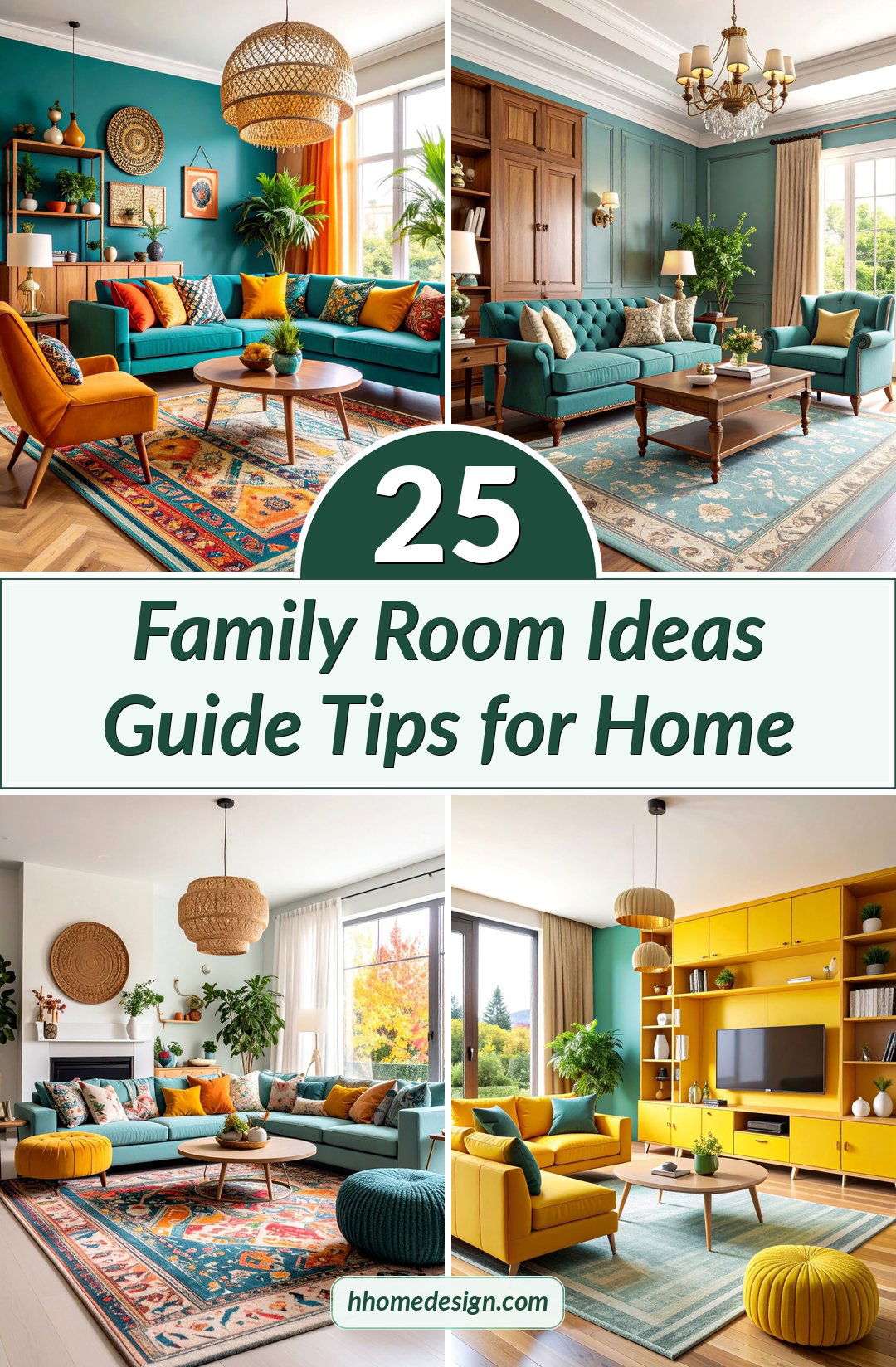
1. Modern Coastal Farmhouse Family Room with Shiplap Accents

Transform your family room into a serene coastal farmhouse retreat featuring crisp white shiplap walls and natural wood beam ceilings. The design combines weathered wood furniture with soft blue and white textiles, creating an airy yet grounded atmosphere. A large sectional upholstered in durable performance fabric anchors the space, while woven baskets provide stylish storage for toys and blankets. Incorporate vintage-inspired lighting fixtures and reclaimed wood coffee tables to enhance the rustic charm. Natural jute rugs add texture underfoot, while potted greenery brings life to neutral corners. This timeless style effortlessly blends seaside tranquility with farmhouse warmth, creating a family-friendly environment that feels both sophisticated and lived-in.
2. Scandinavian Minimalist Family Room with Built-In Storage
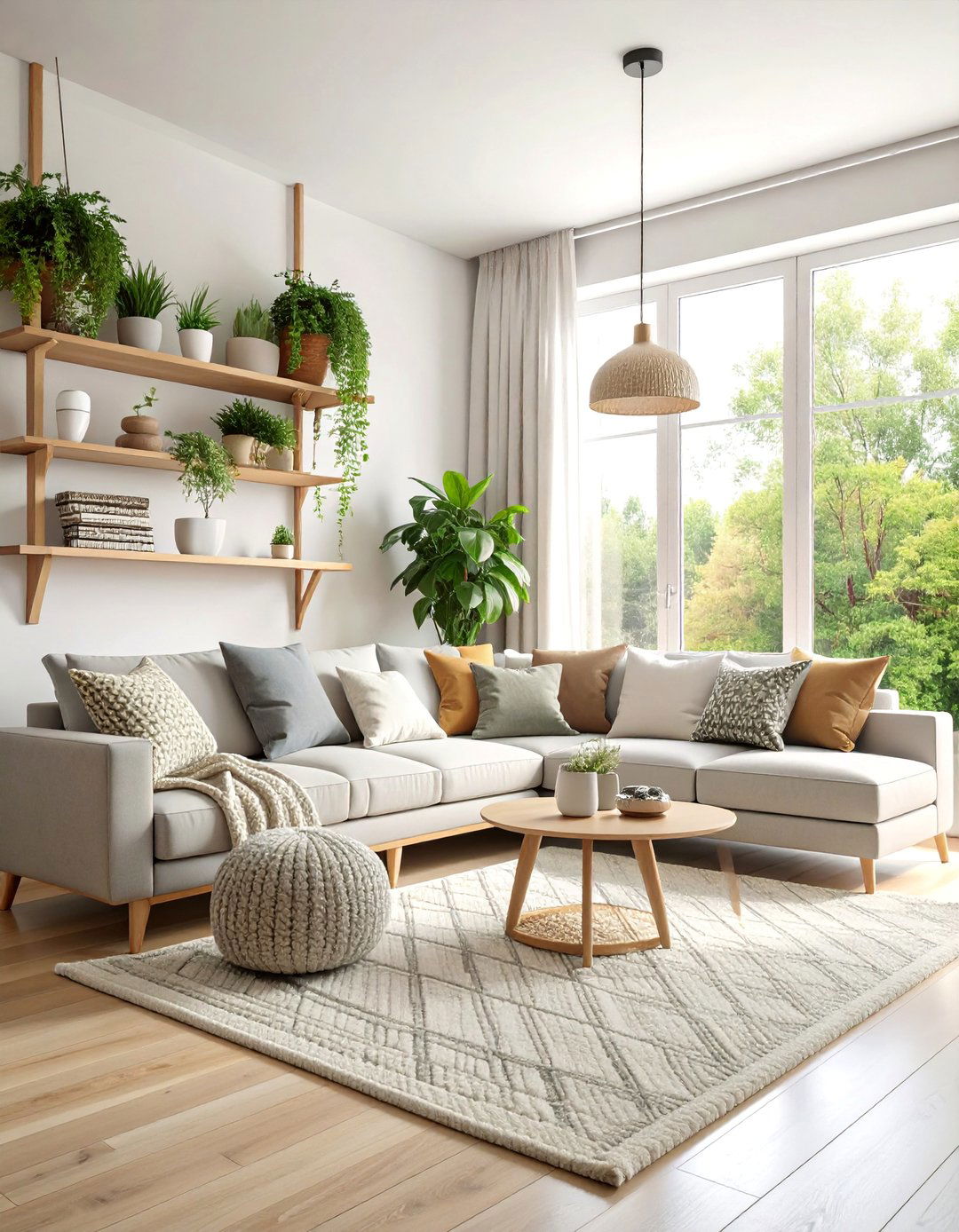
Embrace the beauty of Nordic simplicity with a Scandinavian family room featuring clean lines and functional built-in storage. Light oak shelving units frame the fireplace, providing display space for books and minimal décor while hiding everyday clutter. Choose a low-profile sectional in soft gray or cream, paired with sleek side tables in matching wood tones. Large windows showcase natural light, enhanced by sheer white curtains that maintain privacy without blocking brightness. Add cozy textiles through chunky knit throws and geometric pillows in muted tones. The restrained color palette of whites, grays, and natural wood creates a calming environment that promotes both relaxation and productivity for the whole family.
3. Rustic Industrial Family Room with Exposed Elements
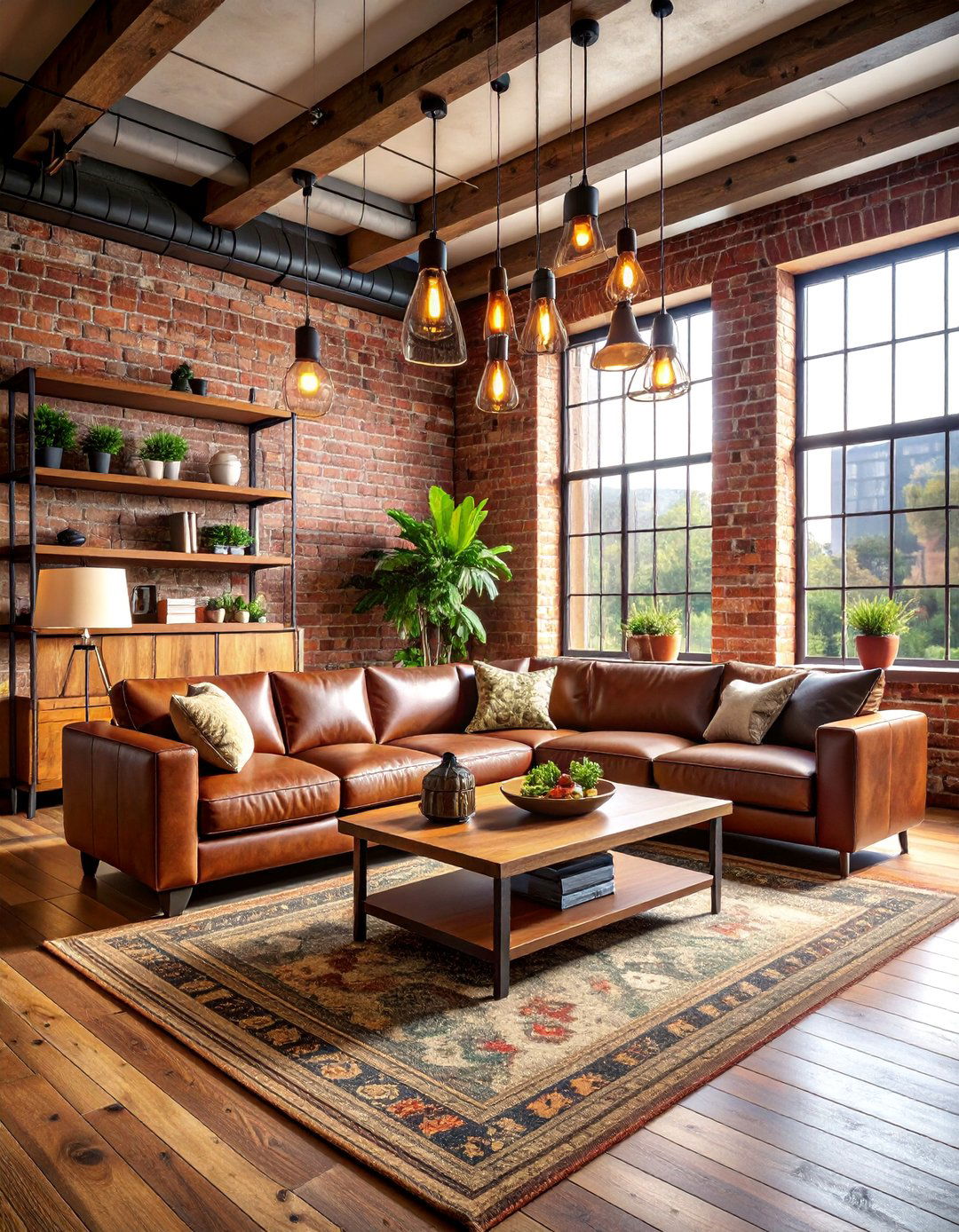
Create an urban loft aesthetic by combining raw industrial elements with warm rustic touches throughout your family room. Exposed brick walls serve as dramatic backdrops for comfortable leather seating, while metal and wood coffee tables add functional style. Install Edison bulb chandeliers or track lighting to emphasize the industrial theme. Incorporate reclaimed wood shelving units for storage and display, balancing the hard edges with soft textiles like wool rugs and linen cushions. Choose furniture with metal accents and distressed finishes to maintain the authentic industrial feel. This design approach works particularly well in open-concept spaces, creating distinct zones while maintaining visual flow throughout the room.
4. Bohemian Eclectic Family Room with Layered Textiles

Design a free-spirited bohemian family room that celebrates personal expression through layered patterns, rich colors, and diverse textures. Mix vintage furniture pieces with modern comfort elements, creating an eclectic seating arrangement using floor cushions, poufs, and a low-profile sofa. Layer multiple rugs in complementary patterns and hang macramé wall art alongside framed travel photography. Incorporate plants throughout the space using hanging planters and floor stands to create a natural, organic feeling. Choose warm jewel tones like deep turquoise, burnt orange, and rich purple for accent pieces. This style encourages creativity and individuality while maintaining comfort for daily family activities and entertaining friends.
5. Mid-Century Modern Family Room with Statement Furniture

Channel the sleek sophistication of the 1950s and 60s with a mid-century modern family room featuring iconic furniture silhouettes and rich wood tones. Select a low-profile sectional with clean lines and tapered legs, complemented by egg-shaped accent chairs in vibrant colors. Install floating shelves in warm walnut or teak to display books and decorative objects. Choose a geometric area rug in bold patterns and add brass accents through lighting fixtures and hardware. The color palette should feature warm neutrals with pops of mustard yellow, orange, or turquoise. This timeless design approach emphasizes both form and function, creating a sophisticated yet family-friendly environment that never goes out of style.
6. Traditional Transitional Family Room with Classic Elements
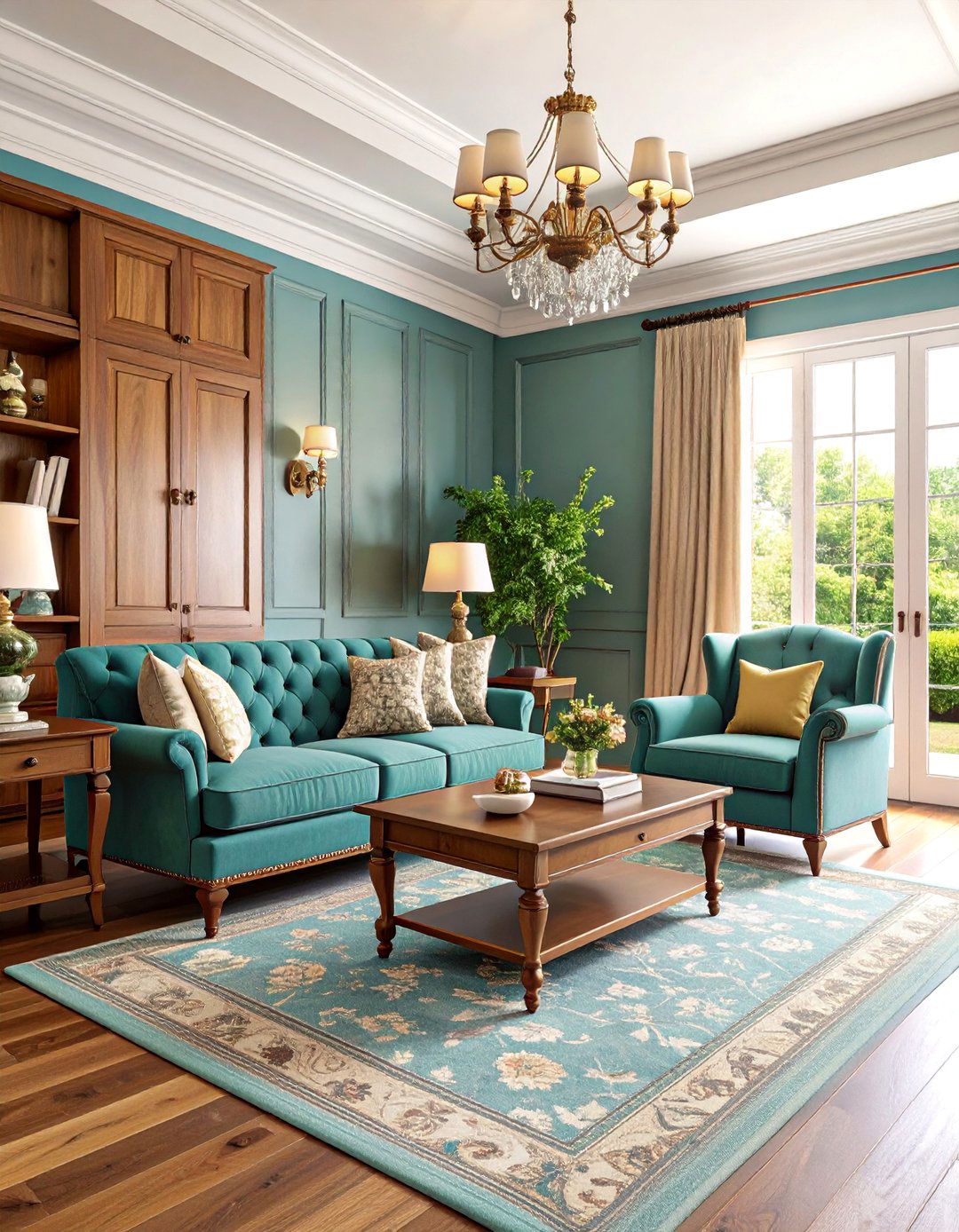
Blend timeless traditional elements with contemporary comfort in a transitional family room that appeals to all generations. Feature rich wood furniture with classic detailing alongside upholstered seating in neutral fabrics. Install built-in cabinetry with raised panel doors for elegant storage solutions. Choose traditional patterns like plaids and florals but in updated color schemes of soft grays and blues. Add architectural interest with crown molding and coffered ceilings if possible. The key is balancing formal elements with casual comfort, using performance fabrics that can withstand daily family use while maintaining sophisticated appearance. This approach creates a refined yet welcoming space perfect for both everyday living and special occasions.
7. Built-In Entertainment Center Family Room with Custom Storage

Maximize functionality with a family room centered around custom built-in entertainment units that seamlessly integrate storage, display, and media components. Design floor-to-ceiling cabinetry that houses the television, gaming consoles, books, and family photos while maintaining clean lines. Choose hidden storage compartments for toys and games, keeping the space organized and clutter-free. The built-ins should match your room's architectural style, whether traditional raised panels or modern flat fronts. Incorporate adjustable shelving to accommodate changing needs and proper cable management for electronics. Complement the built-ins with comfortable seating arranged for optimal viewing angles. This approach creates a polished, custom look while addressing all family entertainment and storage needs efficiently.
8. Large Sectional Family Room with Conversation Layout
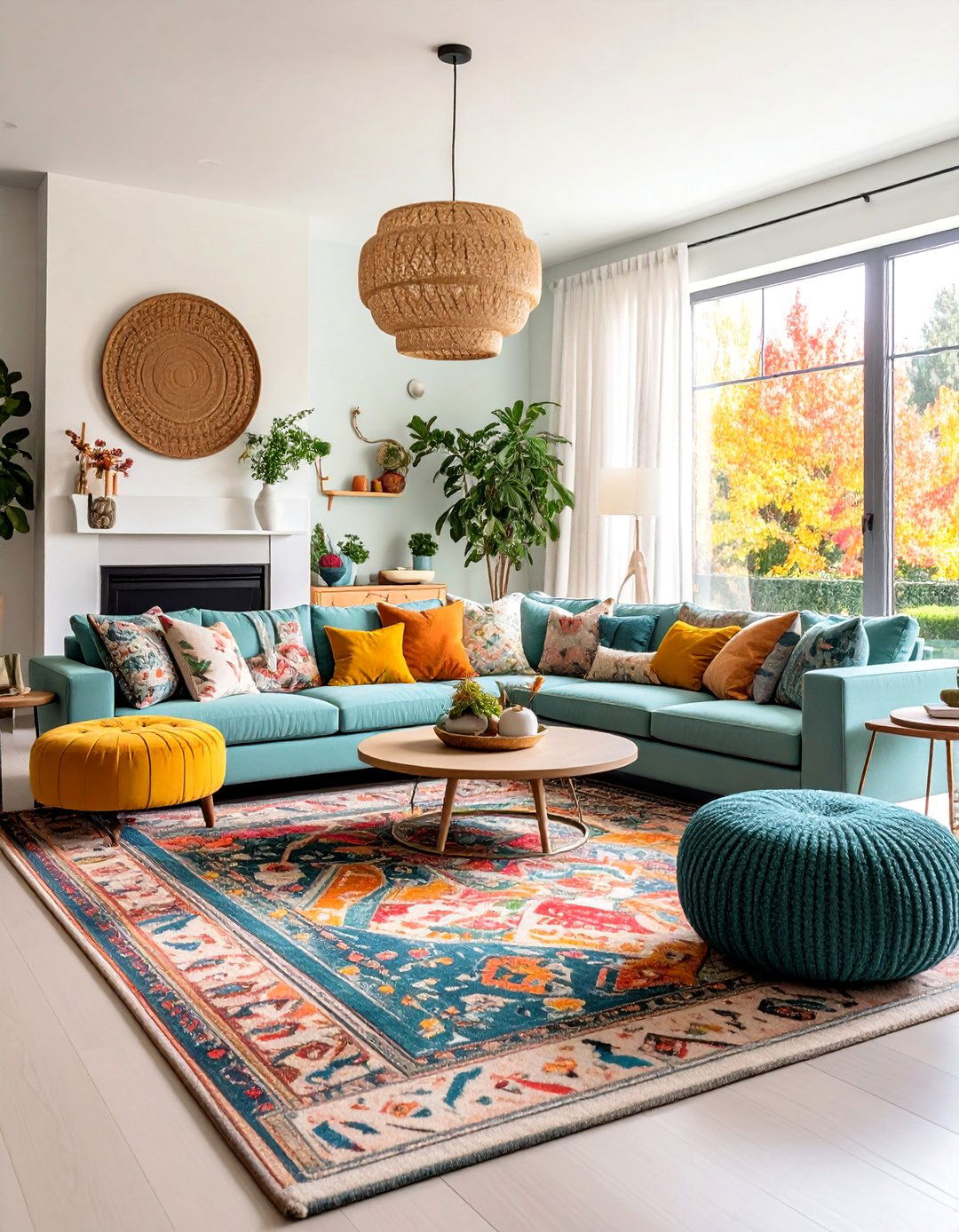
Center your family room design around a generous U-shaped sectional that accommodates large gatherings while promoting conversation and connection. Position the sectional to face multiple focal points, such as a fireplace and entertainment center, ensuring everyone has a good view. Add accent chairs and ottomans that can be easily moved for flexible seating arrangements. Use a large area rug to anchor the seating area and define the space within an open floor plan. Incorporate side tables and console tables for convenience and storage. This layout works particularly well for families who love entertaining or have multiple children, providing ample seating while maintaining an intimate, cohesive feeling that encourages family bonding.
9. Open Concept Family Room with Defined Zones

Create distinct activity zones within an open concept family room that flows seamlessly into kitchen and dining areas. Use furniture placement and area rugs to define the family room space without blocking sight lines. Position a sectional with its back to the kitchen to create natural separation while maintaining connection. Incorporate a console table behind the sofa for additional storage and display space. Choose lighting fixtures that complement adjacent areas while providing focused illumination for reading and activities. The key is maintaining visual cohesion through consistent color schemes and materials while allowing each zone to serve its specific function effectively for modern family living.
10. Maximalist Family Room with Bold Patterns and Colors

Embrace the "more is more" philosophy with a maximalist family room that celebrates color, pattern, and personal collections. Layer multiple patterns through rugs, pillows, and window treatments, ensuring they share common colors for cohesion. Display art collections, books, and treasured objects on open shelving and gallery walls. Choose rich, saturated colors for walls and incorporate metallic accents through lighting and accessories. Mix furniture styles and periods to create visual interest and tell your family's story. The key to successful maximalism is intentional curation rather than random accumulation. This bold approach creates a dynamic, stimulating environment that reflects creativity and individuality while remaining functional for family activities.
11. Biophilic Family Room with Natural Elements

Bring the outdoors inside with a biophilic family room design that incorporates natural materials, plants, and organic shapes throughout the space. Feature a living wall or multiple large plants to improve air quality and create visual interest. Choose furniture made from natural materials like rattan, bamboo, and reclaimed wood. Install large windows or skylights to maximize natural light and views of outdoor landscapes. Use earth-tone color palettes inspired by nature, including forest greens, sky blues, and warm browns. Incorporate water features like small fountains for soothing sounds. This design approach has been proven to reduce stress and improve well-being, making it perfect for busy families seeking a calming retreat.
12. Performance Fabric Family Room with Kid-Friendly Design

Design a stylish yet practical family room using performance fabrics and durable materials that withstand active children and pets. Choose stain-resistant, easy-to-clean upholstery in sophisticated colors and patterns that hide daily wear. Select furniture with rounded corners and sturdy construction to ensure safety during play. Incorporate washable rugs and wipeable surfaces throughout the space. Create designated storage for toys and games using attractive bins and baskets that complement the décor. Install proper lighting for homework and reading activities. The goal is maintaining adult aesthetic preferences while acknowledging the realities of family life, proving that child-friendly spaces don't have to sacrifice style or sophistication.
13. Gallery Wall Family Room with Art Focus
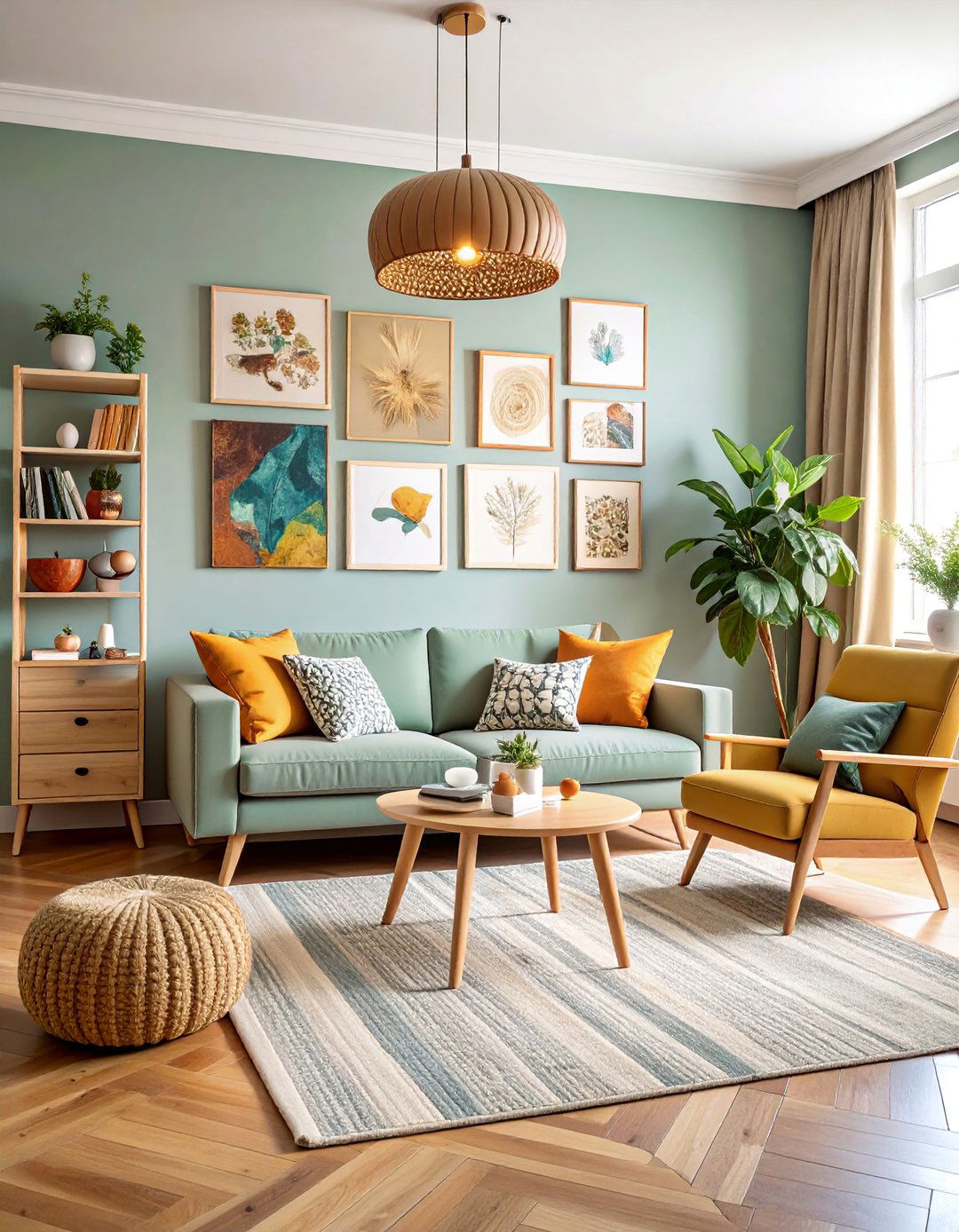
Transform your family room into a personal art gallery featuring curated collections of family photos, children's artwork, and meaningful pieces. Design a dramatic gallery wall as the room's focal point, mixing frame sizes and styles for visual interest. Choose neutral furniture that won't compete with the artwork, allowing the wall display to take center stage. Incorporate proper lighting with picture lights or track lighting to highlight the collection. Use floating shelves for rotating displays of smaller pieces and seasonal decorations. This approach celebrates family memories and creativity while creating a sophisticated, museum-like atmosphere that evolves with your family's changing interests and artistic endeavors.
14. Fireplace-Centered Family Room with Cozy Seating

Create a warm, inviting family room centered around a beautiful fireplace that serves as both focal point and gathering spot. Arrange seating in a semi-circle facing the fireplace to encourage conversation and relaxation. Choose a mantel design that complements your home's architecture, whether rustic wood beams or sleek contemporary stone. Add built-in seating or window seats nearby for additional cozy spots. Use layered lighting to create ambiance when the fireplace isn't in use. Incorporate storage for firewood, games, and blankets within easy reach. This classic layout promotes family bonding while providing a comfortable retreat during colder months, making the fireplace the natural heart of your home.
15. Small Space Family Room with Multi-Functional Furniture
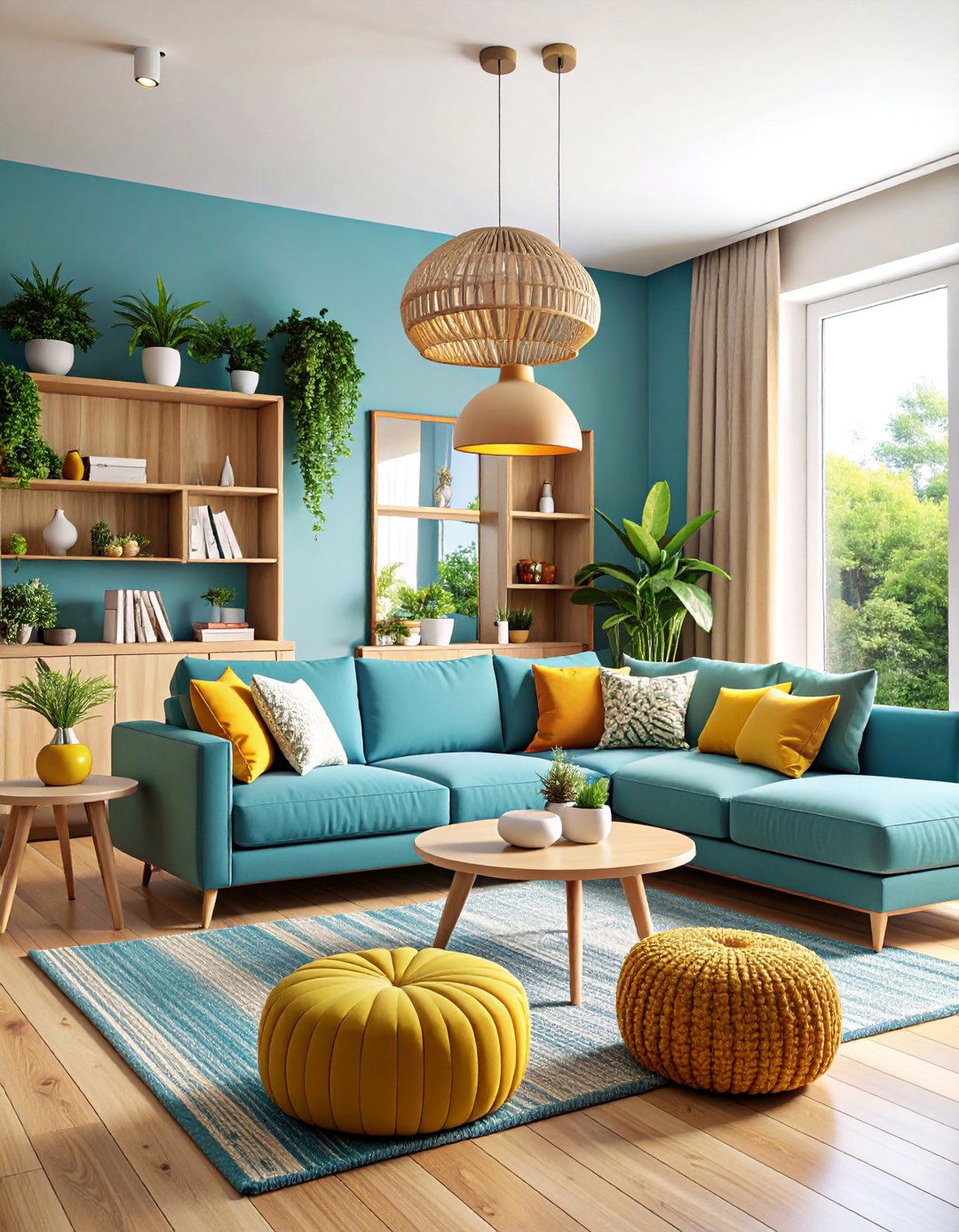
Maximize limited square footage with smart furniture choices and space-saving solutions that don't compromise on style or comfort. Choose a compact sectional with built-in storage or a sofa bed for overnight guests. Incorporate nesting tables that can be separated when needed and tucked away when not in use. Install floating shelves instead of bulky bookcases to maintain open sight lines. Use ottomans with hidden storage for extra seating and organization. Choose light colors and mirrors to create the illusion of more space. The key is selecting pieces that serve multiple purposes while maintaining a cohesive design aesthetic that makes the room feel larger and more functional.
16. Reading Nook Family Room with Literary Focus

Design a family room that celebrates the love of reading with dedicated spaces for both individual and family reading time. Create a cozy reading corner with a comfortable armchair, good lighting, and side table for books and beverages. Install floor-to-ceiling bookshelves that showcase your family's library and provide easy access to favorites. Add a reading bench under windows with cushions and throw pillows for comfortable seating. Choose warm, inviting colors that promote relaxation and concentration. Incorporate task lighting throughout the space for optimal reading conditions at any time of day. This design encourages literacy and family bonding while creating a peaceful retreat from digital distractions.
17. Neutral Color Palette Family Room with Timeless Appeal

Create a sophisticated family room using a carefully curated neutral color palette that provides a timeless foundation for changing décor preferences. Choose warm whites, soft grays, and natural beiges as your base colors, adding depth through varied textures and materials. Incorporate different shades of the same color family to prevent monotony while maintaining harmony. Use natural materials like wood, stone, and linen to add warmth and interest without relying on bold colors. This approach allows seasonal decorating changes through accessories like pillows, throws, and artwork. The neutral foundation ensures longevity and versatility while creating a calming environment that appeals to all family members and works with any decorating style evolution.
18. Vintage Antique Family Room with Mixed Periods

Combine vintage and antique pieces from different eras to create a family room rich with history and character. Mix mid-century modern furniture with Victorian accessories and industrial lighting fixtures for an eclectic, collected-over-time appearance. Choose quality pieces with good bones that can withstand daily family use while telling interesting stories. Incorporate family heirlooms and flea market finds alongside carefully selected reproduction pieces. The key is balancing different periods and styles through common elements like color or material. This approach creates a unique, personal space that can't be replicated from catalog shopping while teaching children to appreciate craftsmanship and history through everyday living.
19. Statement Lighting Family Room with Dramatic Fixtures

Make lighting the star of your family room design with bold, sculptural fixtures that serve as functional art pieces. Choose an oversized chandelier or pendant light as the room's centerpiece, scaling it appropriately for your space. Layer different types of lighting including table lamps, floor lamps, and accent lighting to create depth and ambiance. Use dimmers throughout to adjust lighting for different activities and times of day. Select fixtures that complement your overall design style while making a strong visual statement. The dramatic lighting creates focal points and adds personality to the space while providing practical illumination for family activities, reading, and entertaining.
20. Layered Textiles Family Room with Cozy Comfort

Transform your family room into a tactile haven using layered textiles that invite touch and create visual warmth throughout the space. Combine different textures like chunky knit throws, smooth leather cushions, and nubby linen upholstery for depth and interest. Layer multiple rugs in complementary patterns and colors to define seating areas and add softness underfoot. Use window treatments that can be layered for privacy and light control, such as sheer curtains with heavier drapes. Choose fabrics in various scales of pattern, from large florals to small geometrics, unified by a consistent color palette. This approach creates a cozy, inviting atmosphere that encourages relaxation and comfort for all family members.
21. Multi-Purpose Family Room with Flexible Functions

Design a versatile family room that easily transitions between different functions throughout the day, from homework station to entertainment center to exercise space. Choose modular furniture that can be reconfigured as needed, such as ottomans that serve as seating, storage, and surfaces. Install retractable or foldable elements like wall-mounted desks or Murphy beds for occasional use. Use rolling carts for supplies and equipment that can be moved and stored as needed. Incorporate technology solutions like hidden projectors or fold-away screens for entertainment. The goal is creating a space that adapts to your family's changing needs throughout the day while maintaining an organized, attractive appearance.
22. Entertainment-Focused Family Room with Gaming Center

Create the ultimate entertainment family room designed specifically for movie nights, gaming sessions, and sports viewing. Install a large screen television with surround sound system and comfortable theater-style seating with cup holders and side tables. Design storage solutions for gaming consoles, controllers, games, and media collections. Include blackout window treatments for optimal viewing conditions and proper ventilation for electronic equipment. Add bar seating or a snack station for convenient refreshments. Choose furniture that supports long periods of sitting and provides easy conversation during multiplayer activities. This specialized design caters to families who prioritize entertainment and technology while maintaining comfort and style.
23. Indoor-Outdoor Family Room with Seamless Connection

Blur the lines between interior and exterior spaces with a family room that opens seamlessly to outdoor living areas. Install large sliding doors or folding glass walls that can be opened completely to expand your living space. Choose weather-resistant furniture and materials that can handle exposure to outdoor elements when doors are open. Use similar color palettes and materials both inside and outside to create visual continuity. Incorporate ceiling fans and outdoor-appropriate lighting for year-round comfort. Add indoor plants that can transition outdoors seasonally. This design approach works particularly well in mild climates, extending your family's living space and promoting indoor-outdoor lifestyle preferences.
24. Two-Conversation Area Family Room with Separate Zones
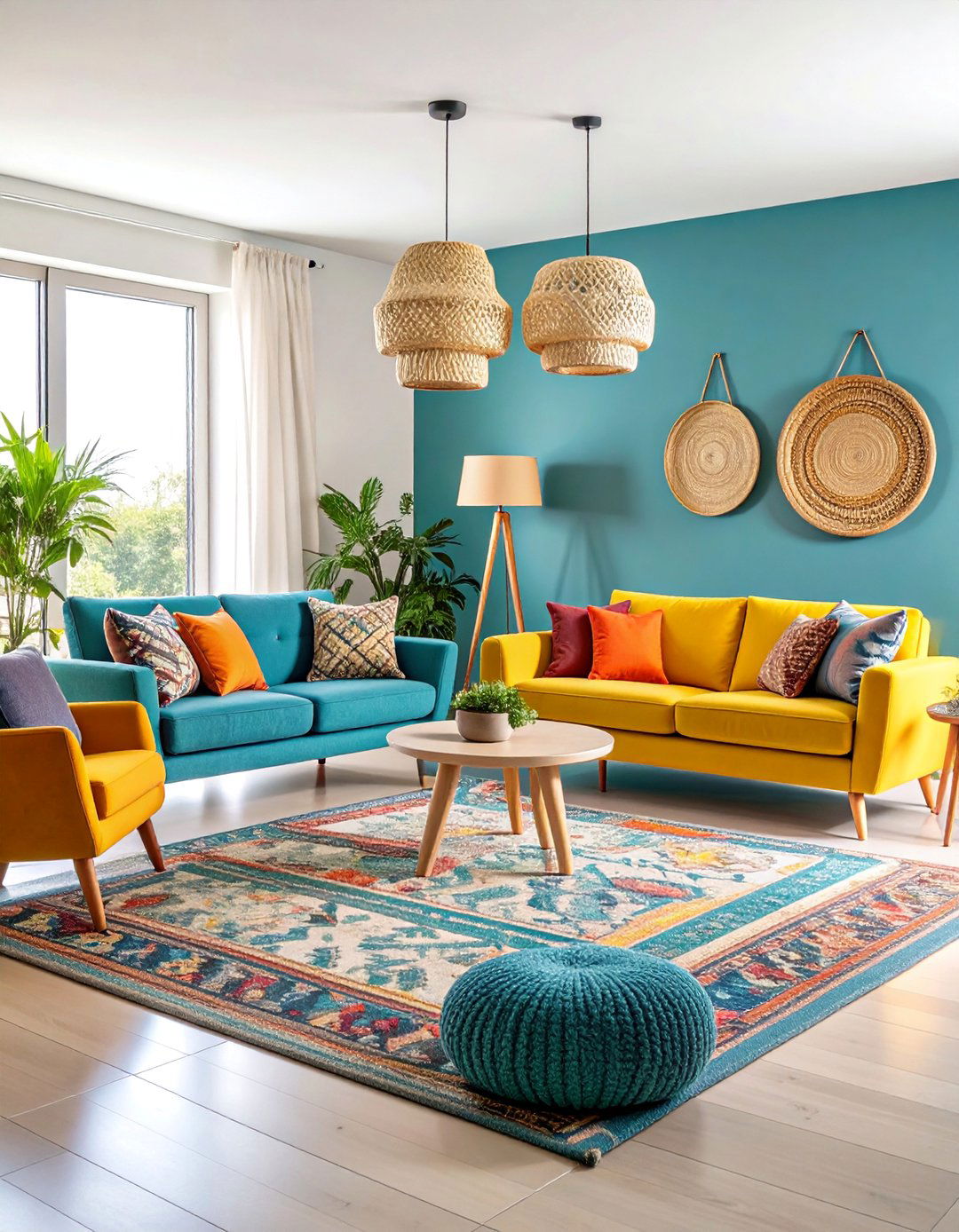
Create distinct conversation areas within one family room to accommodate different activities and age groups simultaneously. Position two separate seating arrangements that can function independently while maintaining visual connection. Use area rugs to define each zone and choose furniture that encourages face-to-face conversation rather than focusing solely on television viewing. Incorporate different lighting schemes for each area to support various activities like reading, crafts, or casual conversation. Add storage and side tables convenient to each seating group. This layout works well for families with children of different ages or multigenerational households where various activities happen simultaneously while maintaining family connection.
25. Statement Ceiling Family Room with Architectural Interest
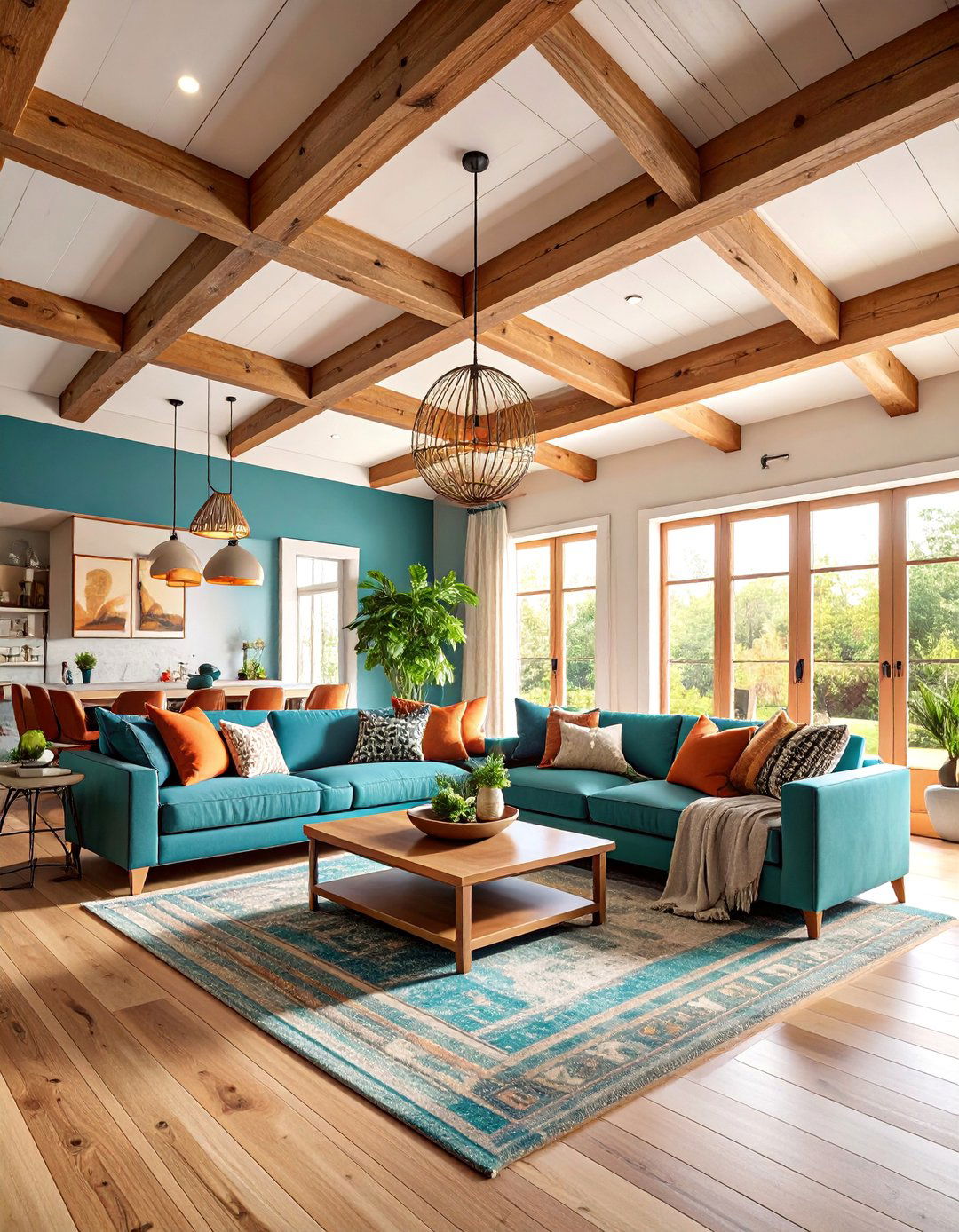
Draw attention upward with a family room featuring dramatic ceiling treatments that add architectural interest and visual height to the space. Install exposed beams, coffered ceilings, or decorative molding that complements your home's style. Choose lighting fixtures that highlight the ceiling architecture while providing functional illumination. Use paint techniques like tray ceilings with contrasting colors or wallpaper to create focal points overhead. The enhanced ceiling treatment makes the room feel more spacious and luxurious while adding character that can't be achieved through furniture alone. This approach works particularly well in rooms with high ceilings, transforming unused vertical space into a stunning design element that elevates the entire room.
Conclusion:
Creating the perfect family room requires balancing aesthetics with functionality while reflecting your family's unique lifestyle and preferences. Whether you gravitate toward minimalist Scandinavian design, cozy farmhouse charm, or bold maximalist statements, the key lies in thoughtful planning and quality execution. Consider your family's daily activities, storage needs, and growth patterns when making design decisions. Remember that the best family rooms evolve with your family, accommodating changing needs while maintaining their foundational appeal and comfort for years to come.


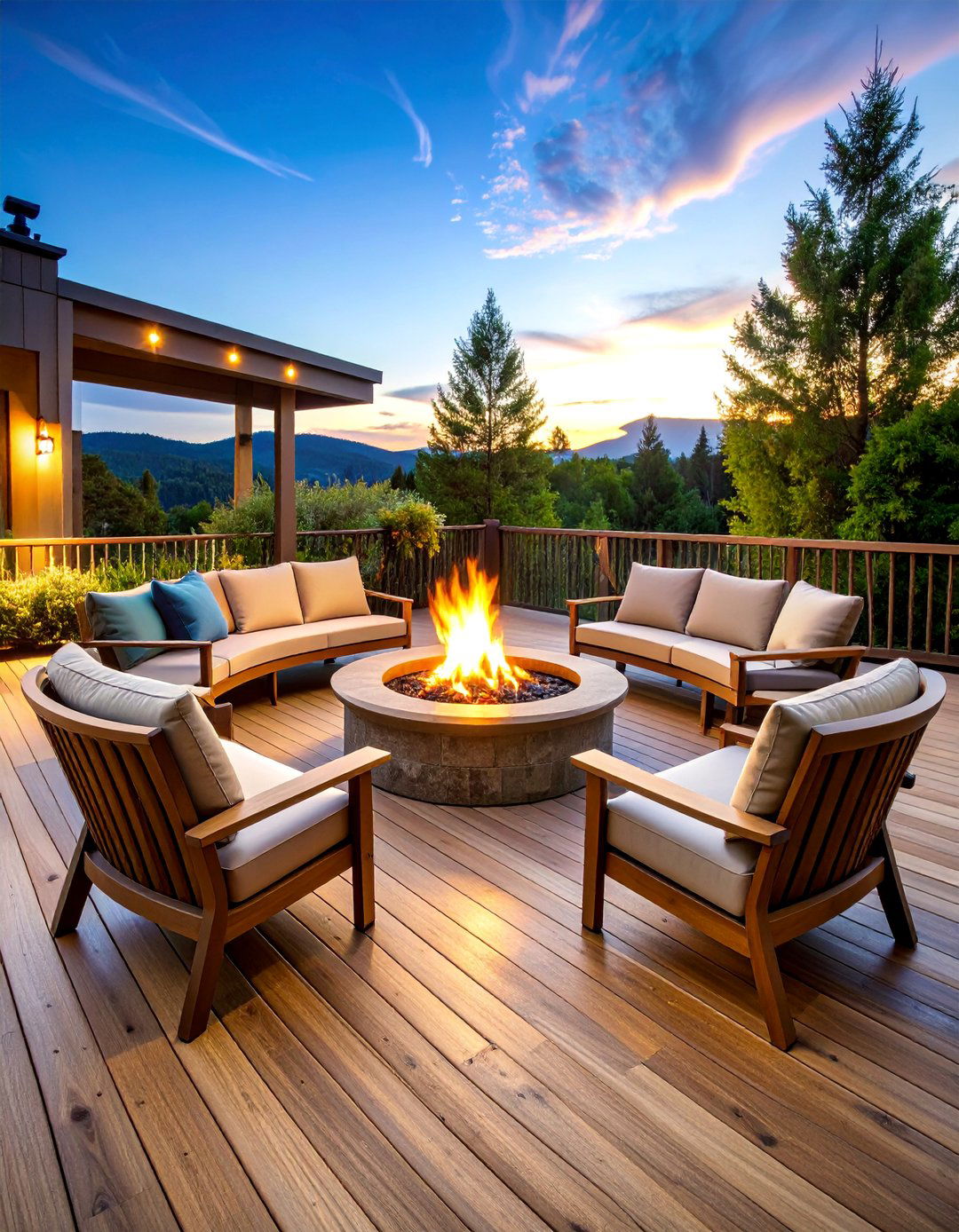
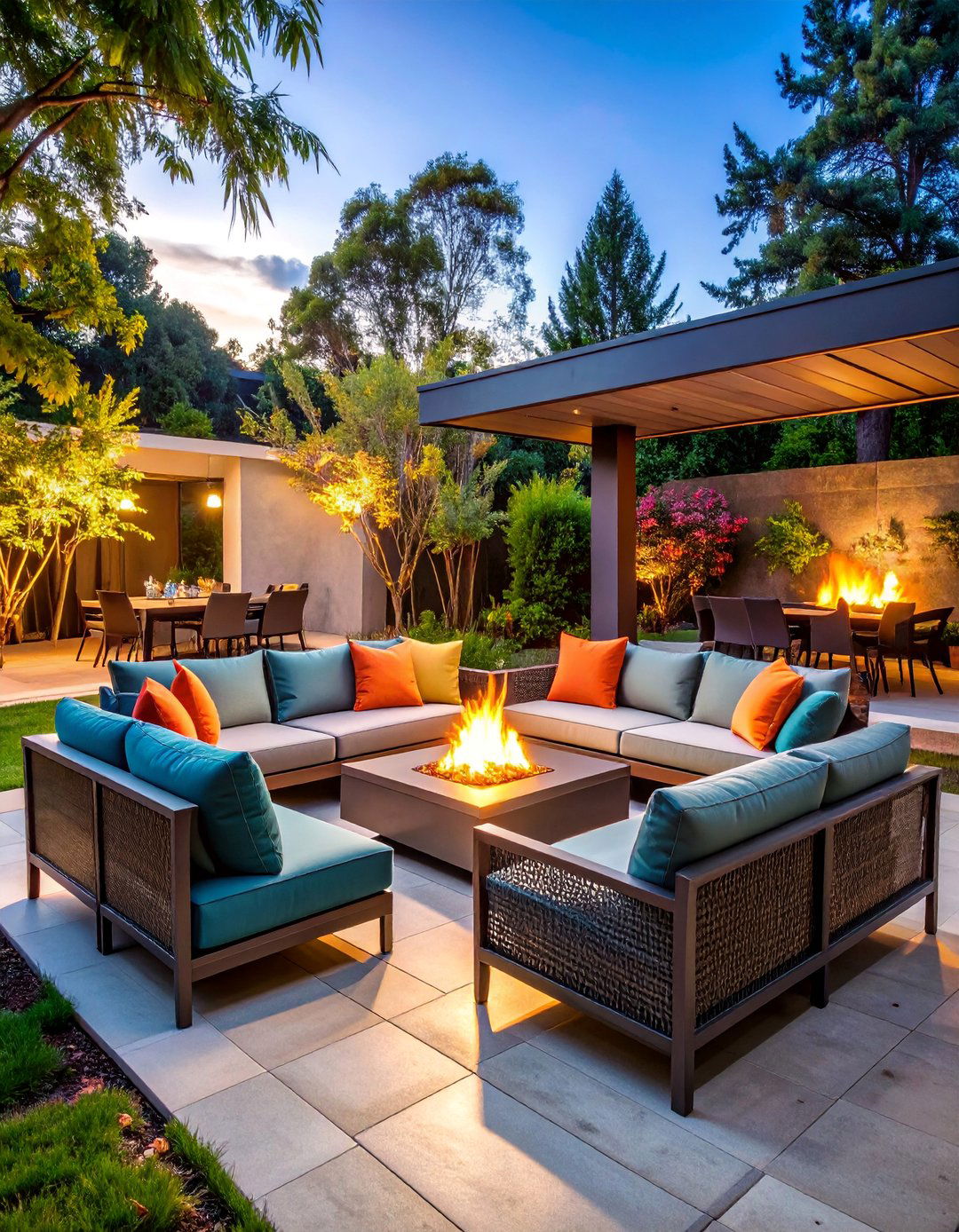
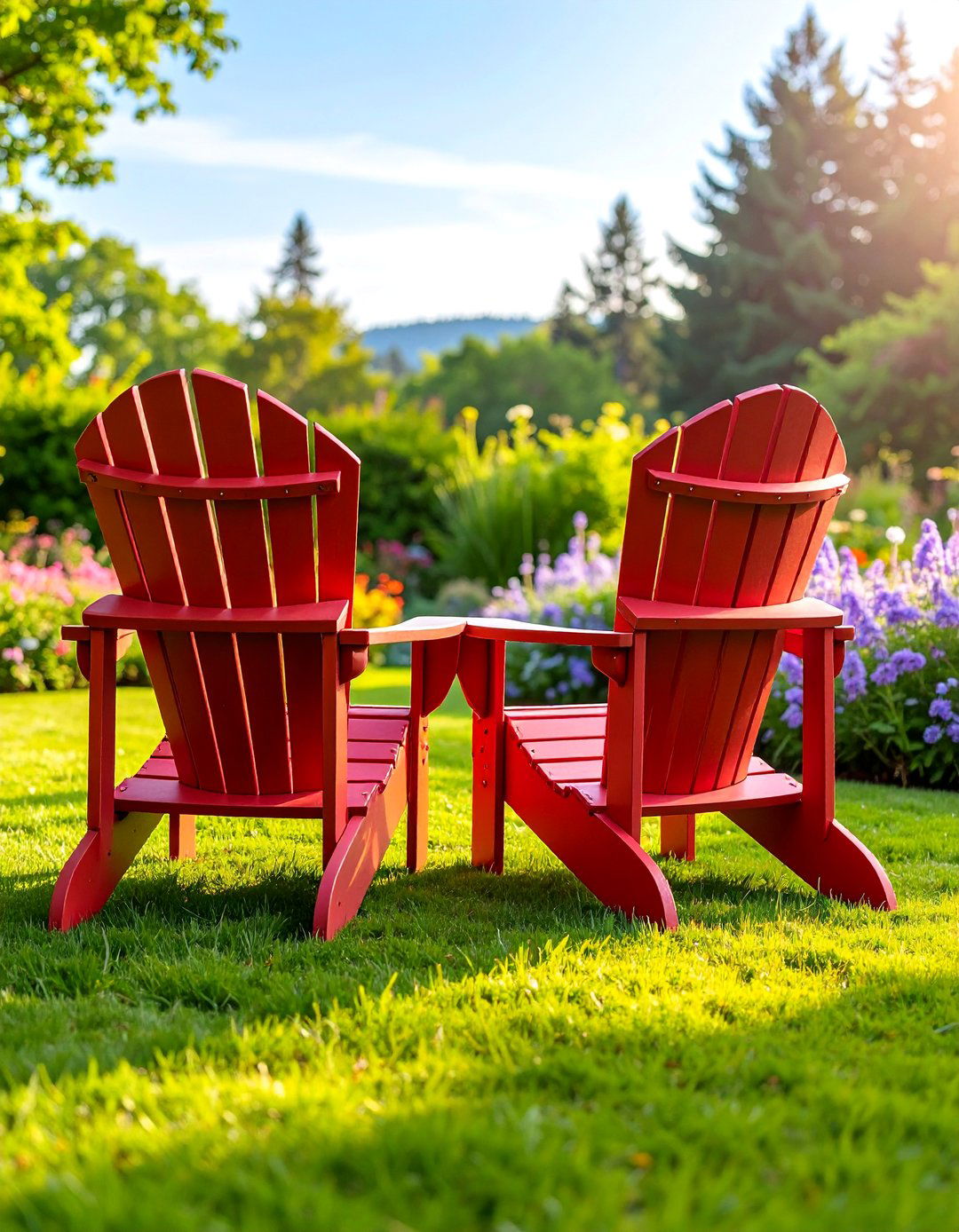


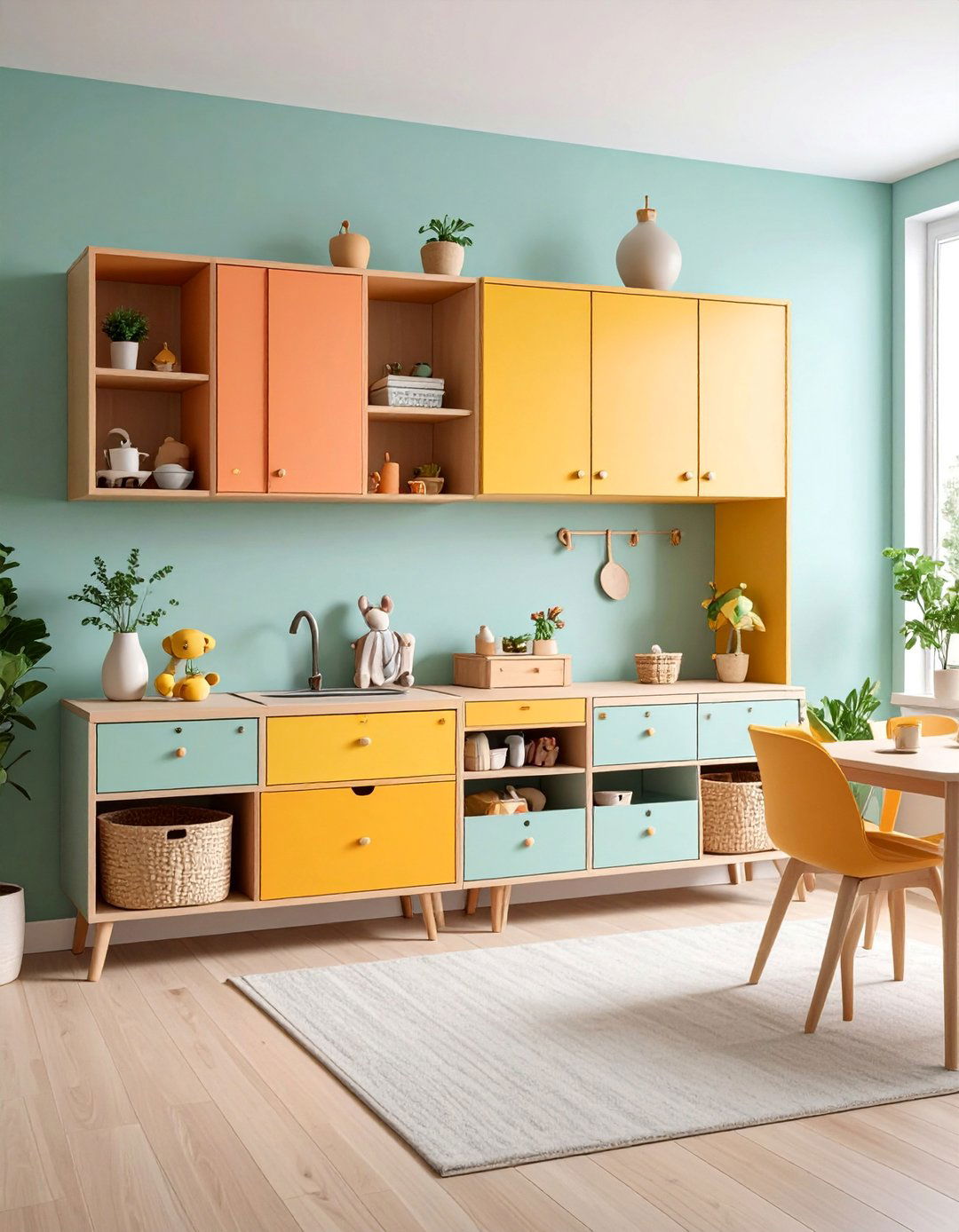
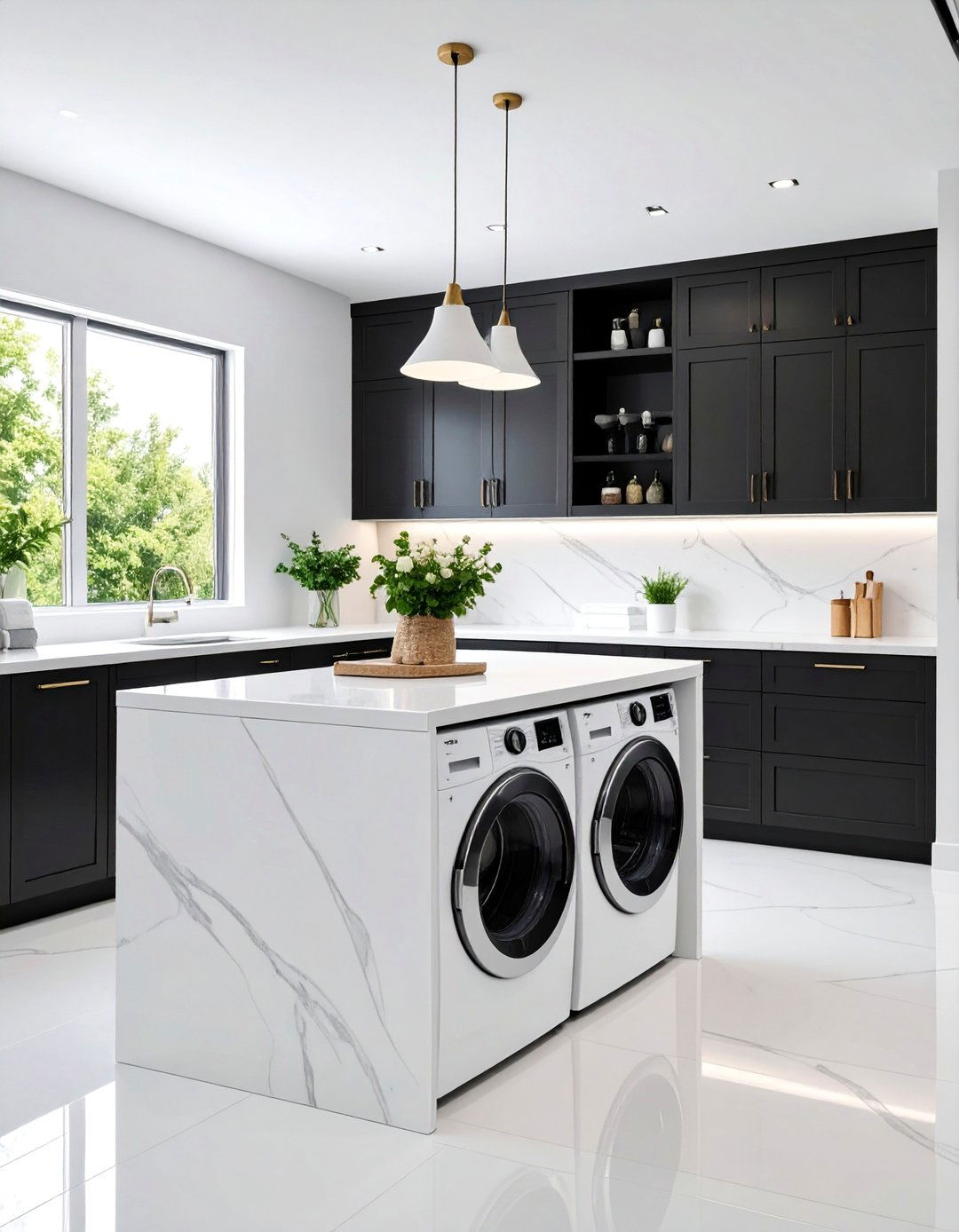



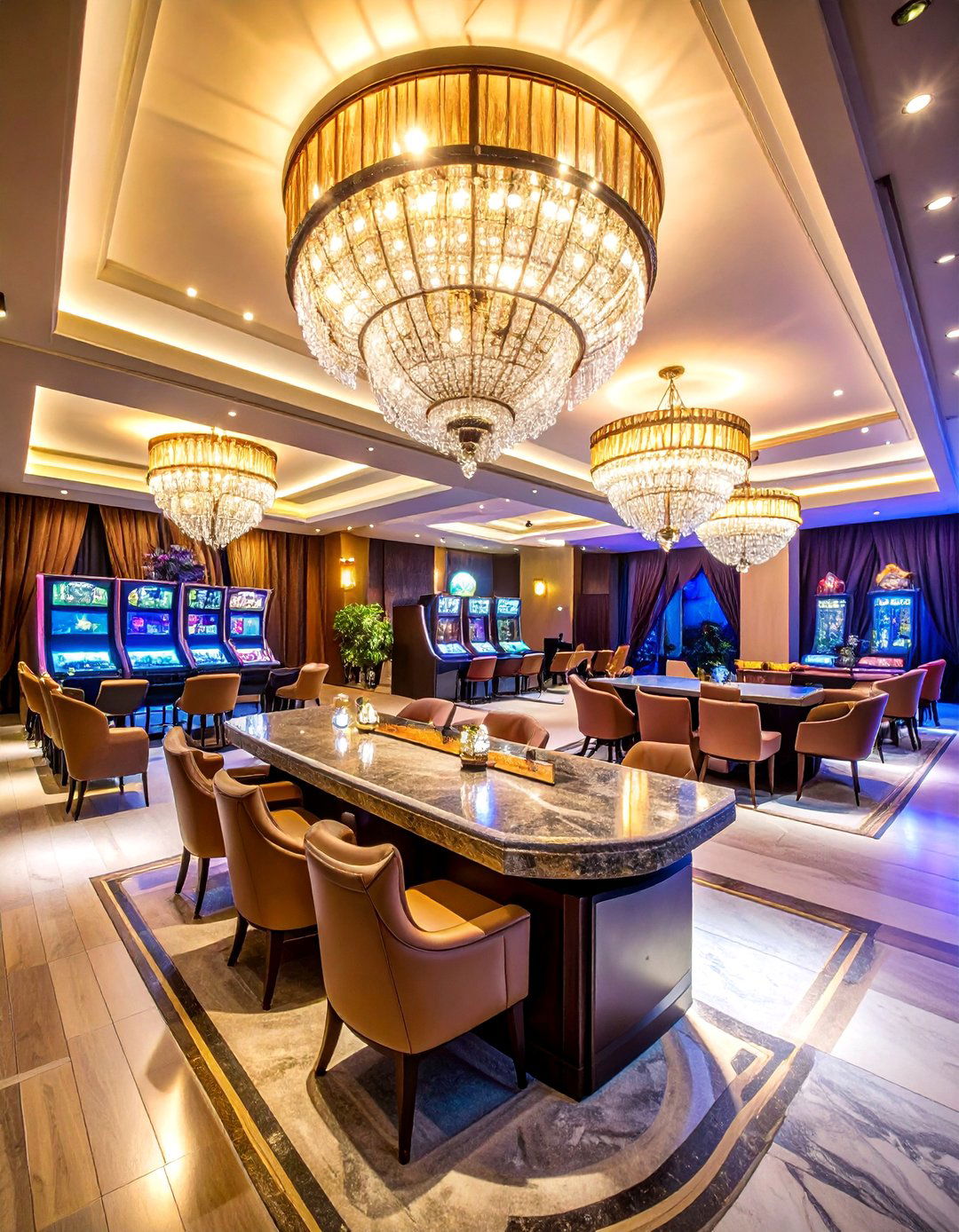
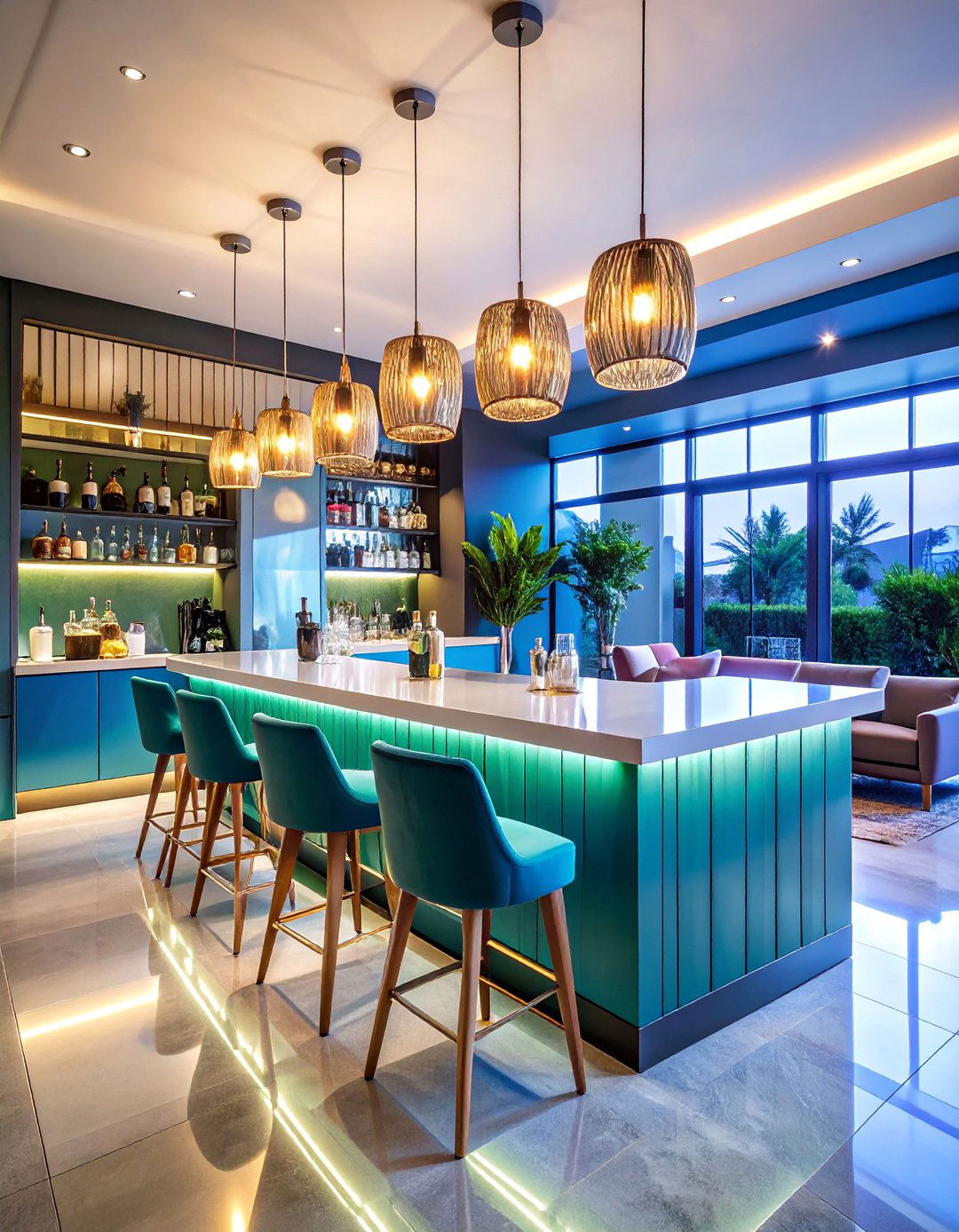
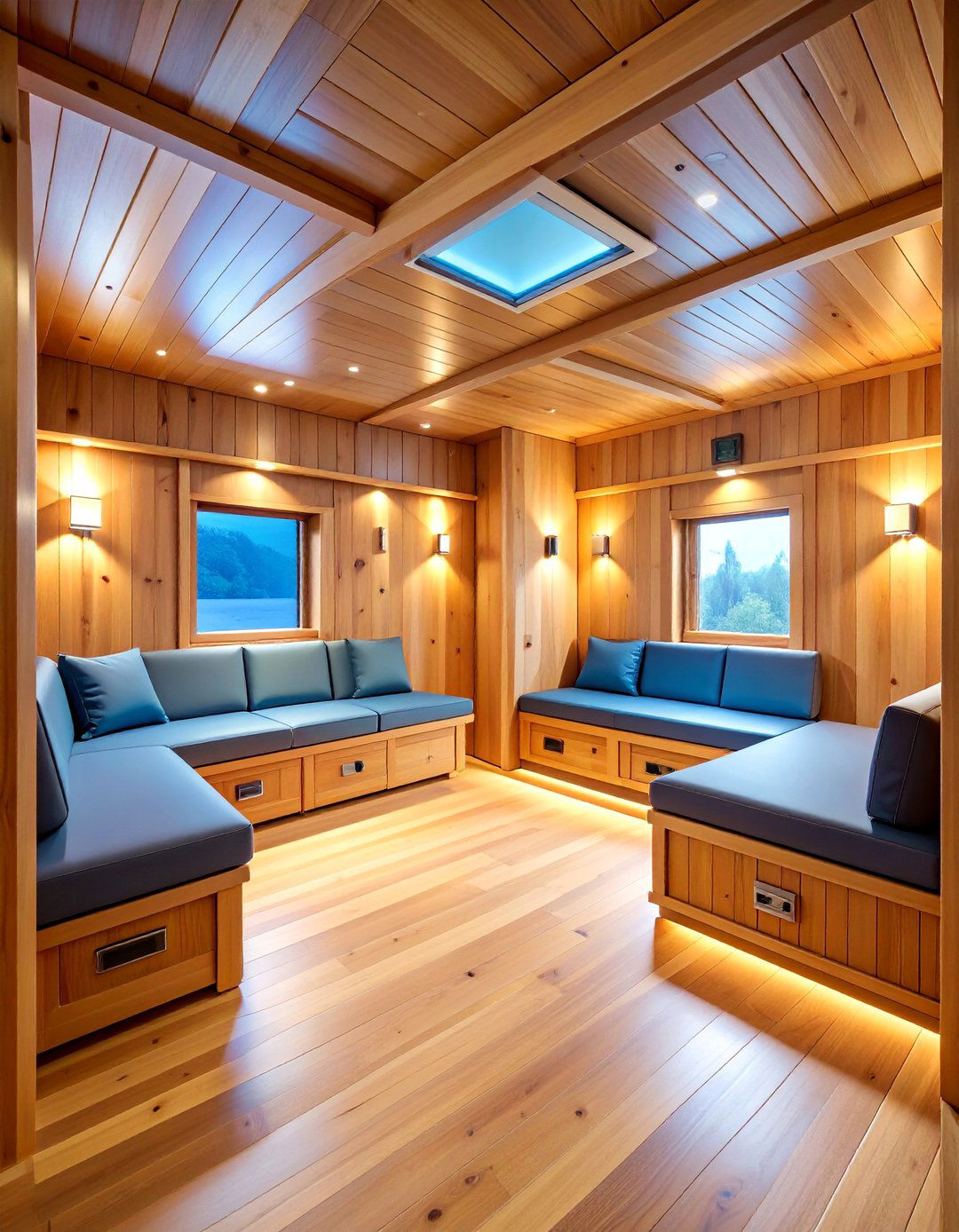
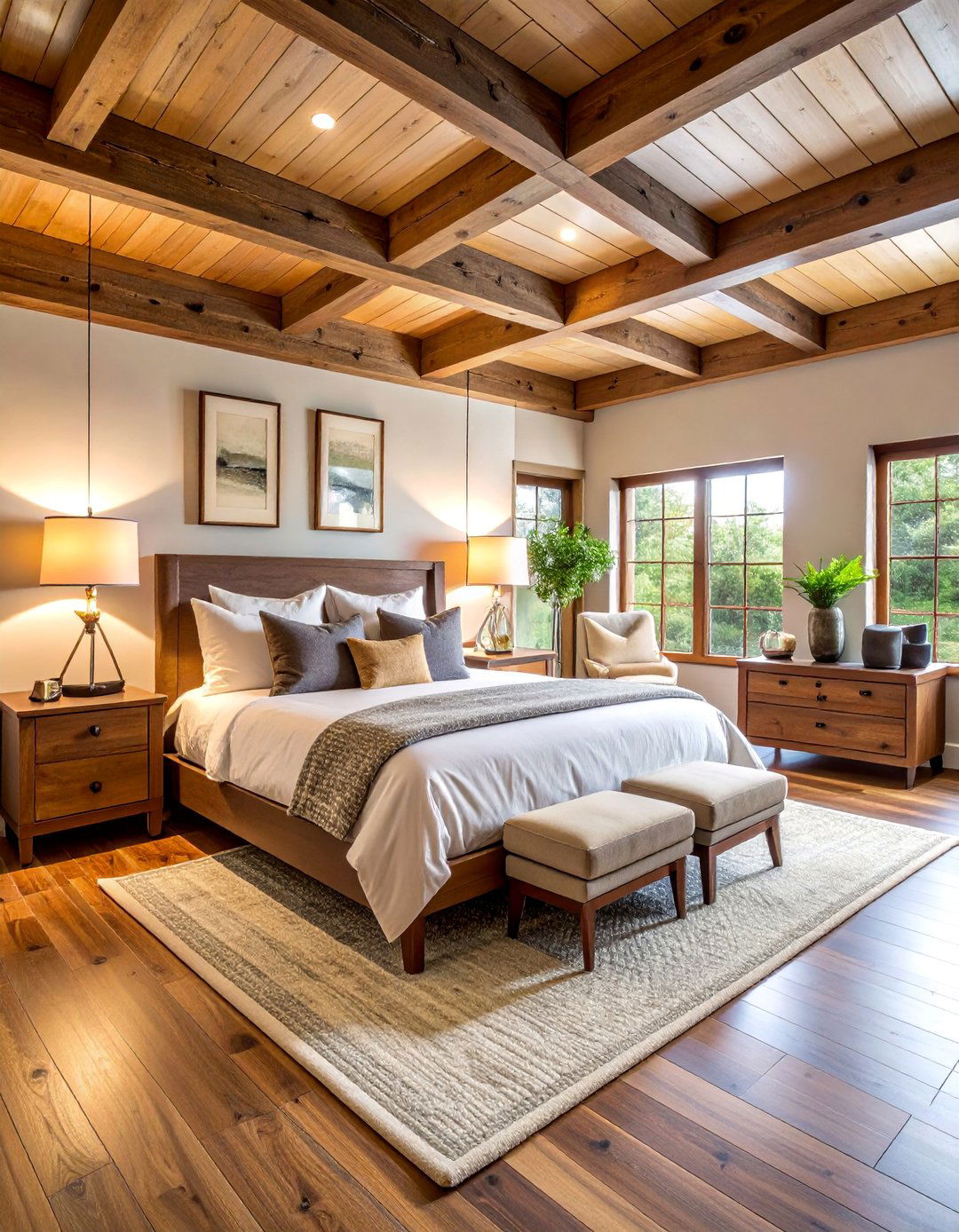
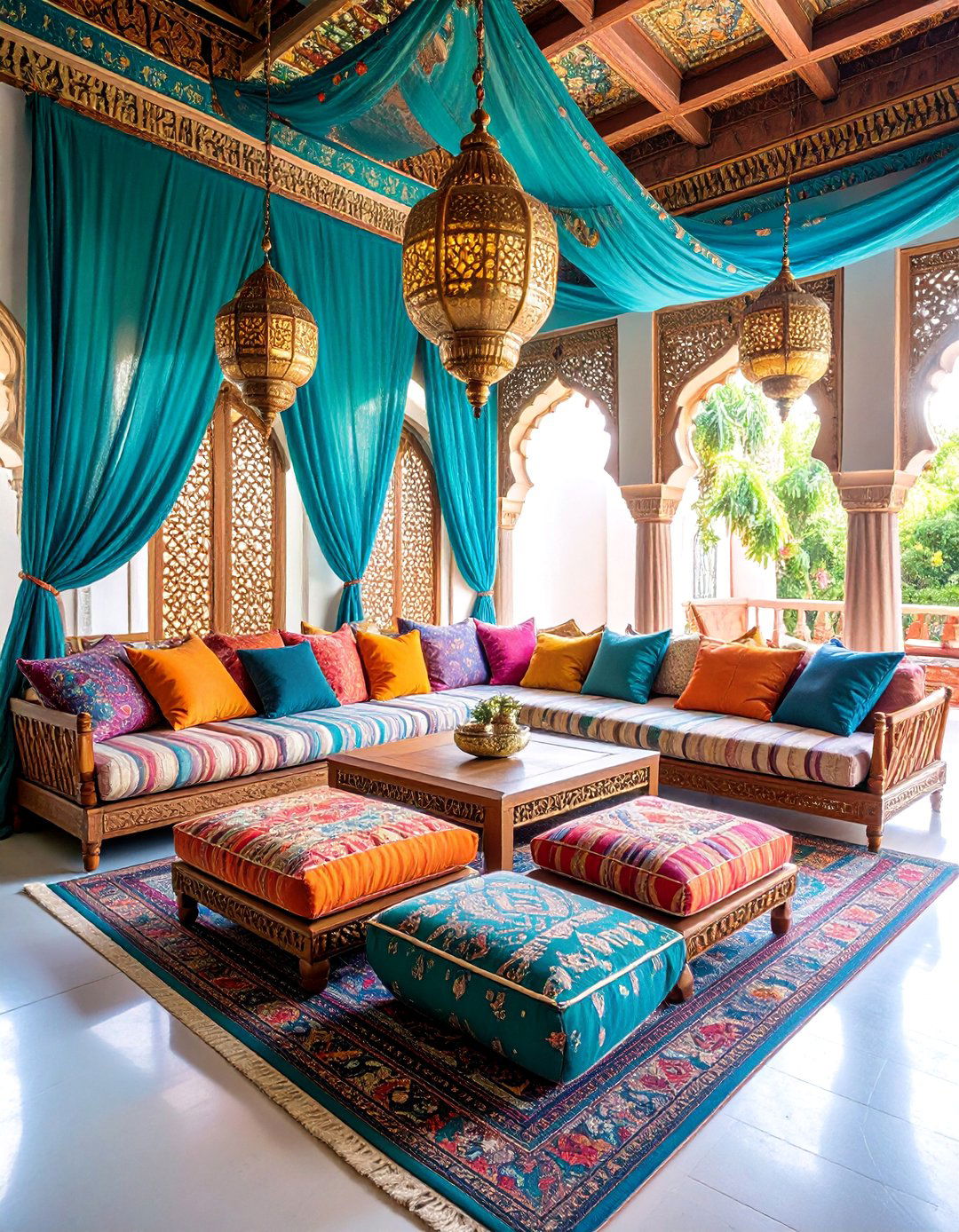
Leave a Reply